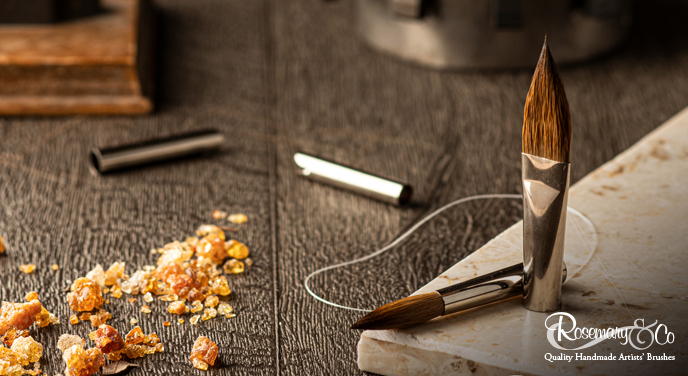icture frames aren't just about holding your artwork or photographs; they're a crucial element in showcasing and enhancing your cherished memories and favorite pieces. Choosing the right picture frame can make a significant difference in ...

Preservation Framing - Protecting Artwork From Damage and Deterioration
Preservation Framing - Protecting Artwork From Damage and Deterioration
When it comes to preserving and showcasing your artwork or photographs, custom framing offers a world of possibilities. In this article, I will guide you through the importance of custom picture framing, the benefits it offers, and how to make the right choices to create a personalized frame that enhances your cherished pieces.
Introduction
Introduction
When you have a unique piece of art or a precious photograph, a custom picture frame can transform it into a true masterpiece. Custom framing involves creating a frame tailored to the specific dimensions, style, and aesthetic requirements of your artwork. It goes beyond simply selecting a pre-made frame from a store, allowing you to customize every aspect to suit your individual taste and the artwork's needs.
The Significance of Preservation Framing
The Significance of Preservation Framing
Preservation framing is not just about aesthetics; it is about safeguarding the integrity and value of your artwork. By implementing proper preservation techniques, you can prevent various forms of damage that can occur over time, including fading, discoloration, moisture damage, mold growth, and physical wear.
Understanding Artwork Damage and Deterioration
Understanding Artwork Damage and Deterioration
To effectively protect your artwork, it is essential to understand the factors that can cause damage and deterioration. These factors include:
Light and UV Radiation
Light and UV Radiation
Exposure to sunlight and artificial light sources, particularly ultraviolet (UV) radiation, can cause irreversible damage to artwork. UV rays accelerate color fading, degrade pigments, and weaken paper and textiles. Preservation framing incorporates UV-protective glazing materials to block harmful rays and minimize fading.
Humidity and Temperature Fluctuations
Humidity and Temperature Fluctuations
Fluctuations in humidity and temperature levels can lead to artwork damage. High humidity can cause mold growth, paper warping, and paint cracking, while low humidity can result in brittle paper and dried-out paint. Preservation framing provides a barrier against these fluctuations, creating a stable microclimate for the artwork.
Airborne Contaminants and Particles
Airborne Contaminants and Particles
Dust, pollutants, and airborne contaminants can settle on artwork surfaces, causing discoloration, staining, and surface abrasions. Preservation framing uses proper sealing techniques and materials to protect the artwork from these external elements.
Physical Handling and Impact
Physical Handling and Impact
Improper handling and physical impact can cause scratches, tears, dents, and other physical damage to artwork. Preservation framing includes secure mounting and framing methods to ensure the artwork remains well-protected and stable.
Choosing the Right Preservation Framing Methods
Choosing the Right Preservation Framing Methods
Preservation framing involves carefully selecting the appropriate methods and materials to create a protective environment for your artwork. Here are some considerations when choosing preservation framing:
Acid-Free Materials
Acid-Free Materials
Using acid-free materials is crucial in preservation framing. Acidic components in framing materials can cause deterioration, discoloration, and yellowing of the artwork. Acid-free mats, backing boards, and tapes ensure that no harmful acids come into contact with the artwork, preserving its condition.
UV-Protective Glazing
UV-Protective Glazing
UV-protective glazing materials, such as UV-filtering glass or acrylic, provide a shield against harmful UV rays. These materials block up to 99% of UV radiation, significantly reducing the risk of color fading and pigment degradation.
Proper Mounting and Matting
Proper Mounting and Matting
Secure and appropriate mounting and matting techniques are essential for preserving artwork. Using archival methods, such as hinging or corner pockets, ensures the artwork is firmly attached to its support while allowing for expansion and contraction. Archival mats provide an additional layer of protection by creating a buffer between the artwork and the glazing.
Preservation Framing Techniques
Preservation Framing Techniques
Preservation framing encompasses various techniques to safeguard your artwork. By combining the right methods and materials, you can create a protective and visually appealing display.
Conservation Framing
Conservation Framing
Conservation framing takes into account the long-term preservation needs of the artwork. It involves using museum-quality materials and techniques to ensure the highest level of protection and longevity.
Float Mounting
Float Mounting
Float mounting is a technique where the artwork appears to "float" within the frame, creating a visually striking effect. This method is often used for delicate or three-dimensional artworks, as it eliminates direct contact between the artwork and the matting.
Archival Hinging
Archival Hinging
Archival hinging is a method of attaching the artwork to the matting or backing board using archival-quality tapes or hinges. It allows for easy removal or replacement of the artwork without causing damage.
Conclusion
Conclusion
Preservation framing is an essential aspect of caring for and protecting your valuable artwork. By understanding the factors that can damage artwork and employing preservation framing techniques, you can ensure its longevity and maintain its beauty for future generations to enjoy. Choose acid-free materials, UV-protective glazing, and proper mounting and matting methods to create a protective environment for your artwork.
Remember, preservation framing not only safeguards your investment but also enhances the aesthetic appeal of your artwork. Seek the guidance of professionals in the picture framing art niche to ensure your artwork receives the best preservation treatment possible.
"Elevate your walls with PDR customized framing solutions. Schedule your design consultation now!"
Unique Facts:
Unique Facts:
Exposure to sunlight can cause irreversible damage to artwork within a matter of months.
High humidity levels can lead to mold growth on paper-based artworks.
Preservation framing with UV-protective glazing can block up to 99% of harmful UV radiation.
Acid-free materials, such as acid-free mats and tapes, prevent acid migration and deterioration.
Proper framing techniques can significantly extend the lifespan of artwork, preserving its value and beauty.
Leave a Comment 👋
Leave a Comment 👋

How to Hang Picture Frames and Art Professionally
A short guide how to hang picture frames and art professionally that will eliminate all confusion.



